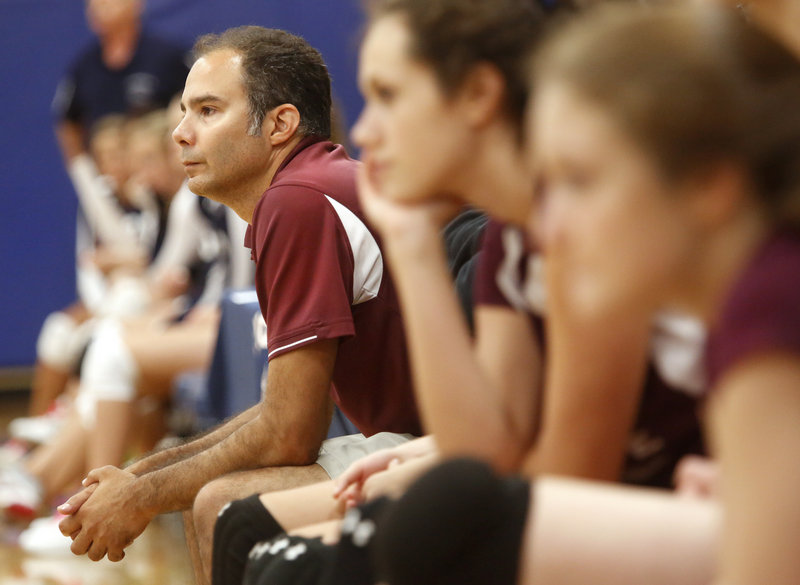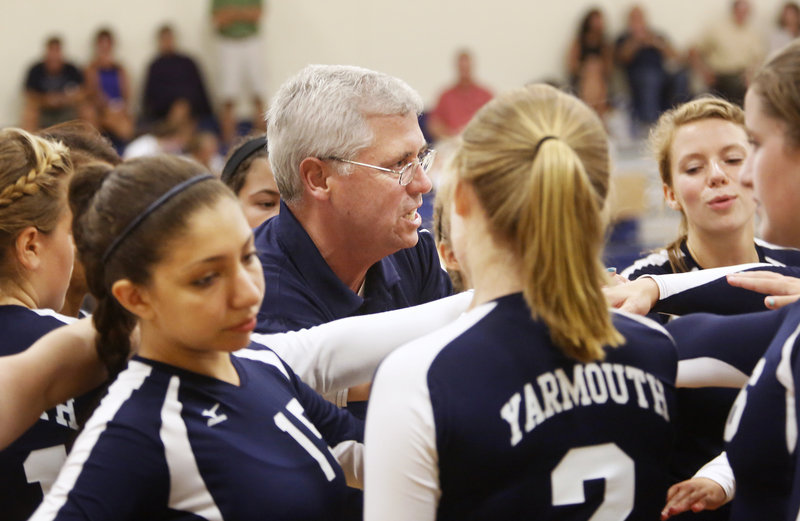There were 14 high schools that offered varsity girls’ volleyball when the Maine Principals’ Association sanctioned the sport in 2002.
There are now 23, with state champs crowned in both Class A and Class B.
The competition is better. The players are more skilled.
“I’m definitely getting better athletes,” said Ruth Shaw, the Biddeford coach since 1999, when she started a club program. “When I first started, not all the girls were athletes. I got some who just decided they were tired of the fall sport that they had played forever.
“Now I’m getting girls who have been playing in the Junior Olympic (volleyball) program for a number of years. They’re better players. And they’re athletes.”
But those who love the sport admit to being a little frustrated by its slow growth.
Nine additional teams in 11 years is not really that much. And while Class A schools such as Thornton Academy — which has 52 participants in its first-year junior varsity program, prompting school officials to divide them into two teams — and South Portland loom on the horizon, long-time coaches such as Jim Senecal at Yarmouth and Kelvin Hasch at Greely hope for more.
“There should be some more growth,” said Senecal, who led the Clippers to the Class B state championship last year. “I think we’re at the point where we’re ready for it.”
A couple things hinder the sports growth. The first is the economy.
“I’ve talked to some athletic directors across the state,” said Cape Elizabeth Coach Rob Thompson. “And it’s really tough to bring in a new sport. Besides the money, they worry if they start volleyball, it will take players away from other sports.”
Volleyball isn’t expensive. One athletic director said it would cost between $8,000 to $10,000 to start it up.
But money is tight now, and few schools are adding anything.
“It really is a direct result of the budget,” said Sanford Athletic Director Gordie Salls. “The sport was growing, but the last couple of years, schools have taken good budget hits and there’s less money going around for the sports you already have.”
The second hindrance is lack of a base. Few middle schools offer the sport; many that do simply offer it as an intramural sport.
“That’s one of the biggest gaps that hinder our growth,” said Senecal. “Teams like Yarmouth have really struggled with developmental programs at lower levels. We’ve tried to put together a program at the middle school, but it’s hard. You’ve got 60 to 70 girls playing soccer there.
“We have to find a way to get those middle schools going. Teams that we play in Class B, schools that are smaller than us, have middle school programs.”
Even at Greely, the defending Class A state champ (and eight-time champ since 2003), that can be a problem.
“Kids come to the high school as freshmen and don’t think about playing volleyball,” he said.
The good news is that four teams have been added in the last two years, including Cheverus and Windham in Class A this year. And Thornton Academy, the state’s largest school with an enrollment of 1,384 students, plans on going to varsity next year.
The school sanctioned volleyball as a sport last July after 37 freshmen indicated in a survey they would play.
“This has given a very significant number of students who otherwise wouldn’t compete in interscholastic sports a chance to do so,” said Thornton Athletic Director Gary Stevens.
Greely’s Hasch, who has seen the talent level rise considerably in his 13 years since coming from California, said players have to continue to improve to keep the sport moving forward.
“That’s what volleyball’s about,” he said. “It’s a great sport when played at a high level.”
Staff Writer Mike Lowe can be contacted at 791-6422 or at:
mlowe@pressherald.com
Twitter: MikeLowePPH
Send questions/comments to the editors.





Success. Please wait for the page to reload. If the page does not reload within 5 seconds, please refresh the page.
Enter your email and password to access comments.
Hi, to comment on stories you must . This profile is in addition to your subscription and website login.
Already have a commenting profile? .
Invalid username/password.
Please check your email to confirm and complete your registration.
Only subscribers are eligible to post comments. Please subscribe or login first for digital access. Here’s why.
Use the form below to reset your password. When you've submitted your account email, we will send an email with a reset code.